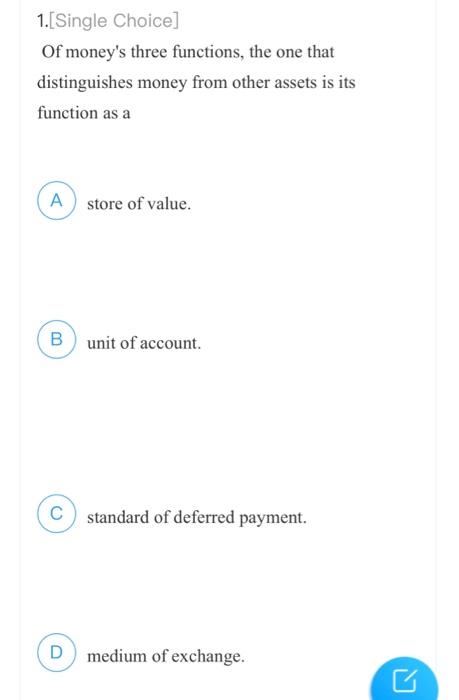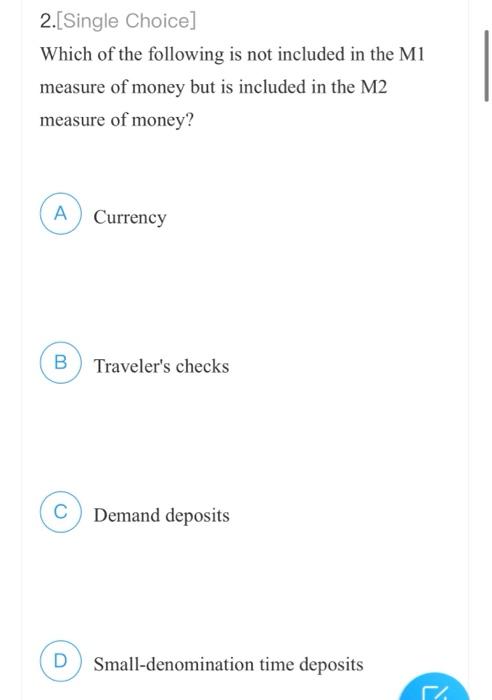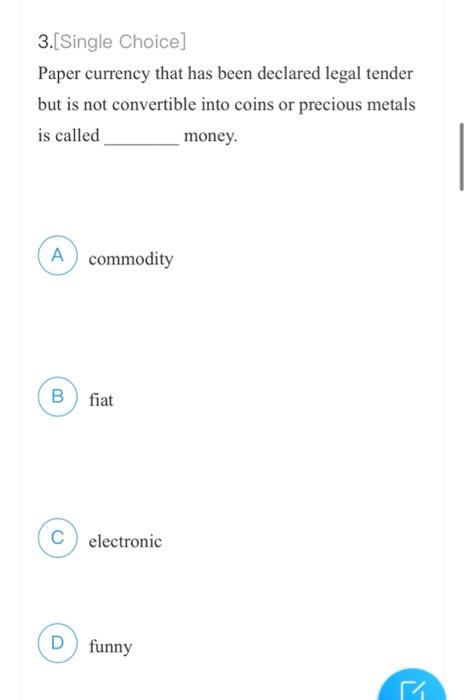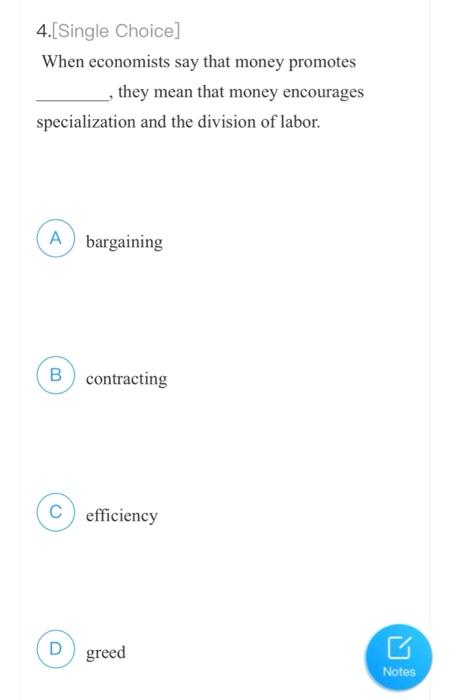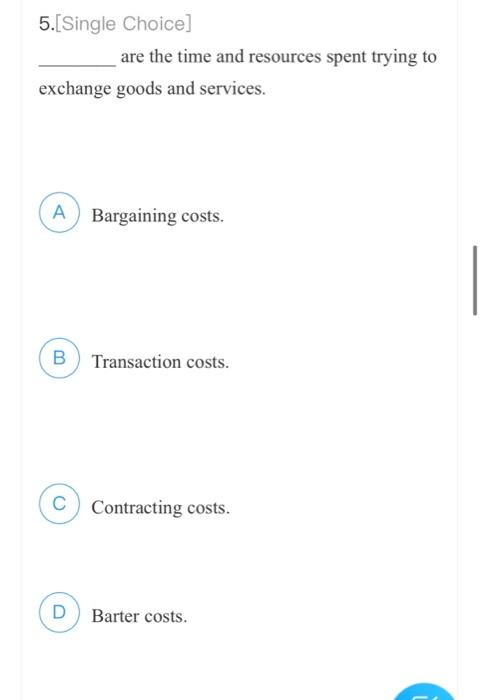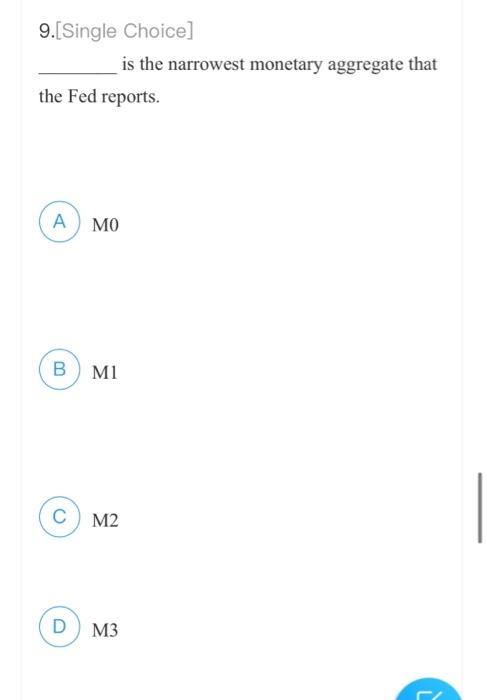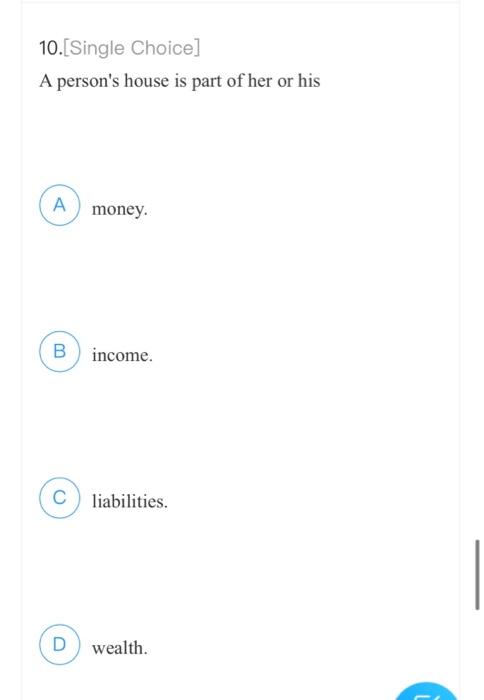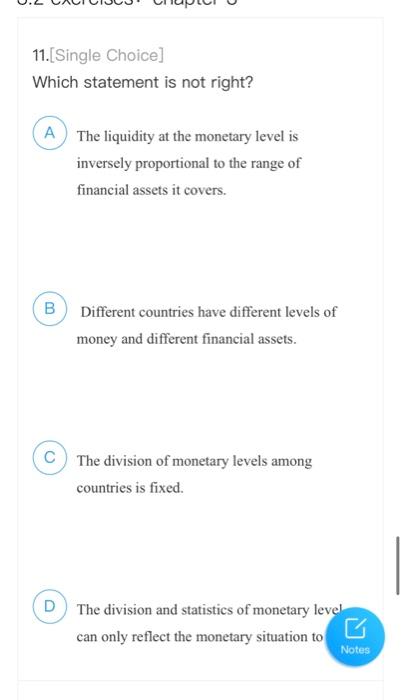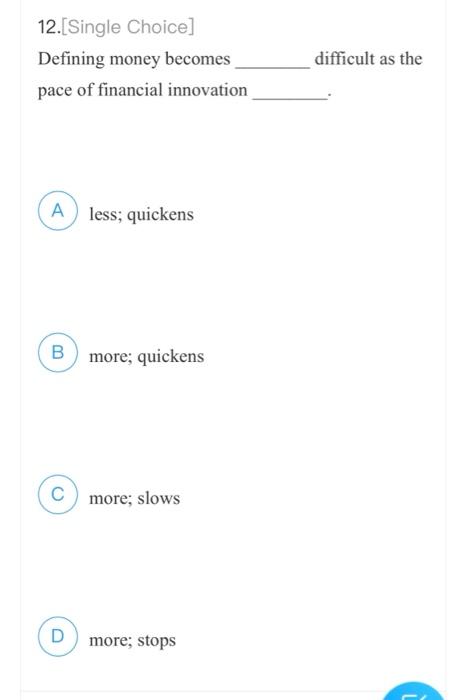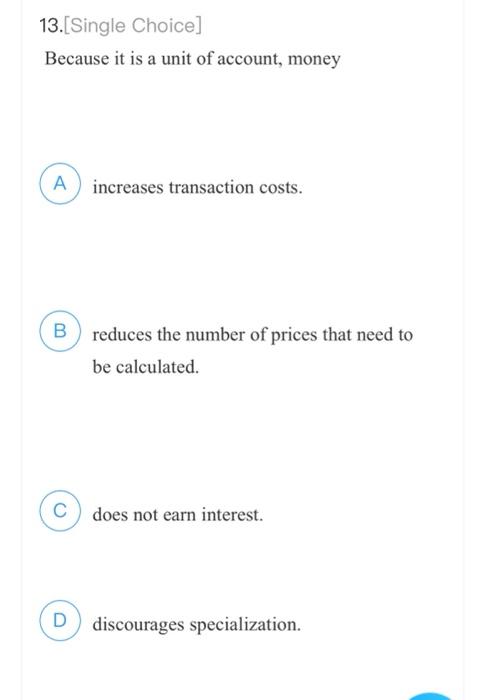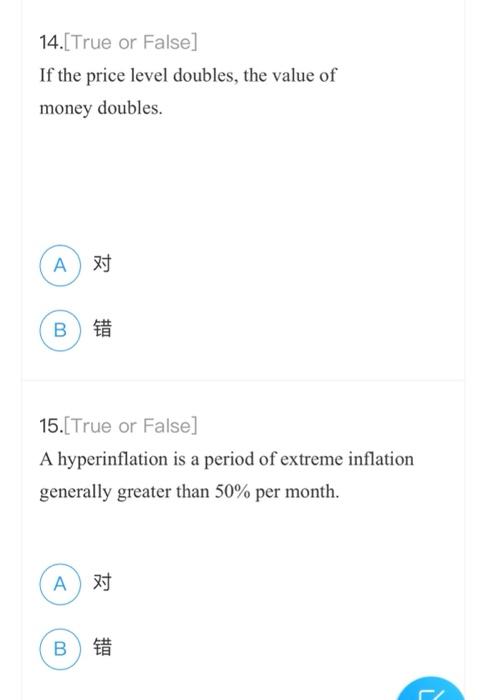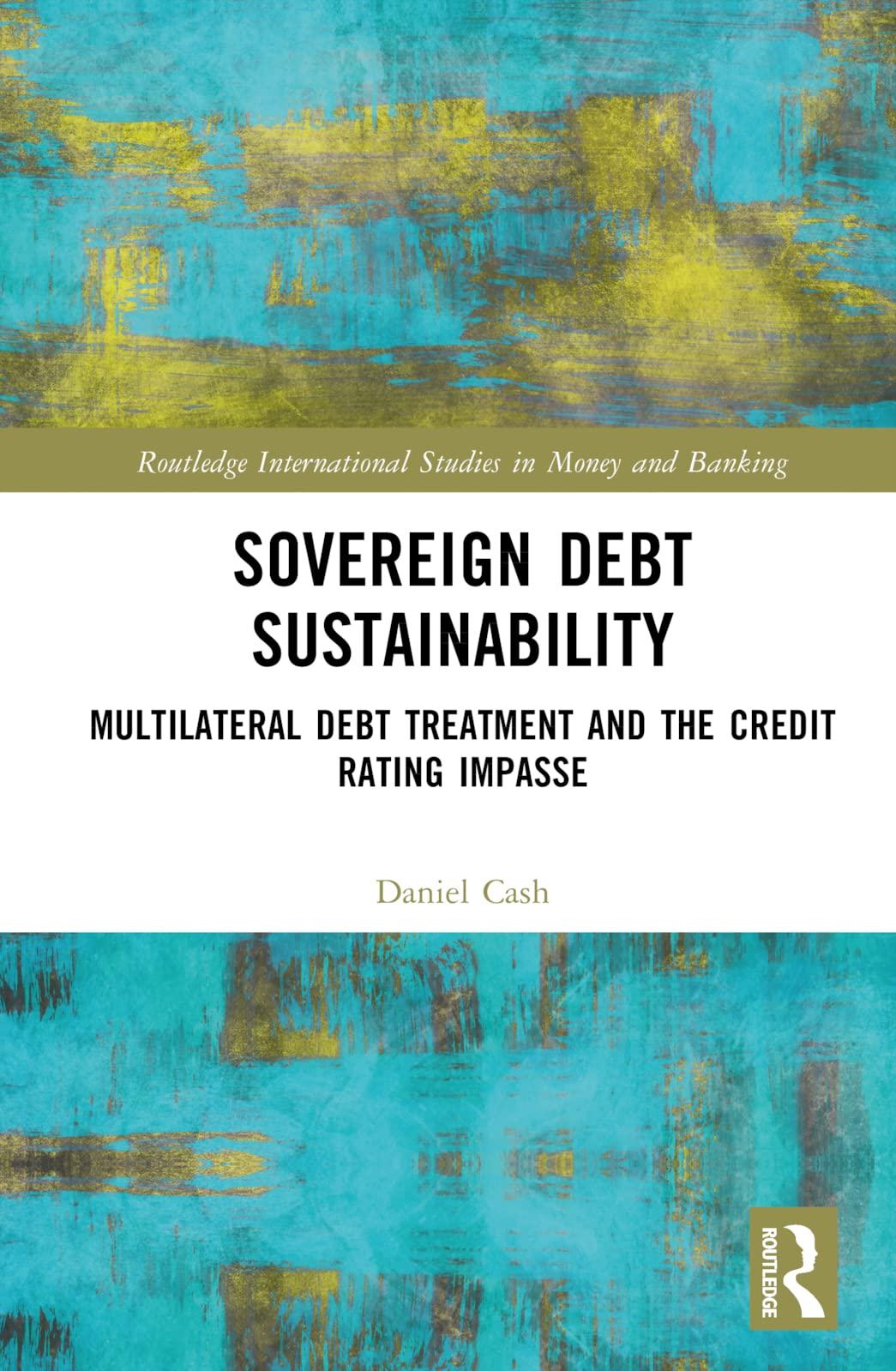1. [Single Choice] Of money's three functions, the one that distinguishes money from other assets is its function as a A store of value. 00 unit of account. standard of deferred payment. D medium of exchange. 2.[Single Choice] Which of the following is not included in the MI measure of money but is included in the M2 measure of money? A Currency B Traveler's checks Demand deposits D Small-denomination time deposits CA 3. Single Choice] Paper currency that has been declared legal tender but is not convertible into coins or precious metals is called money. A commodity B fiat electronic D funny 4.[Single Choice] When economists say that money promotes they mean that money encourages specialization and the division of labor. A bargaining B contracting C c efficiency D greed Notes 5.[Single Choice] are the time and resources spent trying to exchange goods and services. Bargaining costs. B Transaction costs. C Contracting costs. D Barter costs. 6.[Single Choice] To an economist, is anything that is generally accepted in payment for goods and services or in the repayment of debt. A wealth B income money 7.[Single Choice] Because inflation in Germany after World War I sometimes exceeded 1,000 % per month, one can conclude that the German economy suffered from A . deflation. B disinflation. hyperinflation. D superdeflation. 8.[Single Choice] The total collection of pieces of property that serve to store value is a person's A wealth. 00 B income. C money. D credit. 9.(Single Choice] is the narrowest monetary aggregate that the Fed reports. A MO B MI CM2 D M3 10.[Single Choice] A person's house is part of her or his A money. B income. liabilities. D wealth. 11.[Single Choice] Which statement is not right? A The liquidity at the monetary level is inversely proportional to the range of financial assets it covers. B Different countries have different levels of money and different financial assets. The division of monetary levels among countries is fixed. DThe division and statistics of monetary level can only reflect the monetary situation to Notes 12.[Single Choice] Defining money becomes pace of financial innovation difficult as the Aless; quickens B more; quickens more; slows D more; stops 13. Single Choice] Because it is a unit of account, money A increases transaction costs. B B reduces the number of prices that need to be calculated. C does not earn interest. D discourages specialization. 14. [True or False] If the price level doubles, the value of money doubles. A B 15.[True or False] A hyperinflation is a period of extreme inflation generally greater than 50% per month. A B) / 1. [Single Choice] Of money's three functions, the one that distinguishes money from other assets is its function as a A store of value. 00 unit of account. standard of deferred payment. D medium of exchange. 2.[Single Choice] Which of the following is not included in the MI measure of money but is included in the M2 measure of money? A Currency B Traveler's checks Demand deposits D Small-denomination time deposits CA 3. Single Choice] Paper currency that has been declared legal tender but is not convertible into coins or precious metals is called money. A commodity B fiat electronic D funny 4.[Single Choice] When economists say that money promotes they mean that money encourages specialization and the division of labor. A bargaining B contracting C c efficiency D greed Notes 5.[Single Choice] are the time and resources spent trying to exchange goods and services. Bargaining costs. B Transaction costs. C Contracting costs. D Barter costs. 6.[Single Choice] To an economist, is anything that is generally accepted in payment for goods and services or in the repayment of debt. A wealth B income money 7.[Single Choice] Because inflation in Germany after World War I sometimes exceeded 1,000 % per month, one can conclude that the German economy suffered from A . deflation. B disinflation. hyperinflation. D superdeflation. 8.[Single Choice] The total collection of pieces of property that serve to store value is a person's A wealth. 00 B income. C money. D credit. 9.(Single Choice] is the narrowest monetary aggregate that the Fed reports. A MO B MI CM2 D M3 10.[Single Choice] A person's house is part of her or his A money. B income. liabilities. D wealth. 11.[Single Choice] Which statement is not right? A The liquidity at the monetary level is inversely proportional to the range of financial assets it covers. B Different countries have different levels of money and different financial assets. The division of monetary levels among countries is fixed. DThe division and statistics of monetary level can only reflect the monetary situation to Notes 12.[Single Choice] Defining money becomes pace of financial innovation difficult as the Aless; quickens B more; quickens more; slows D more; stops 13. Single Choice] Because it is a unit of account, money A increases transaction costs. B B reduces the number of prices that need to be calculated. C does not earn interest. D discourages specialization. 14. [True or False] If the price level doubles, the value of money doubles. A B 15.[True or False] A hyperinflation is a period of extreme inflation generally greater than 50% per month. A B) /
